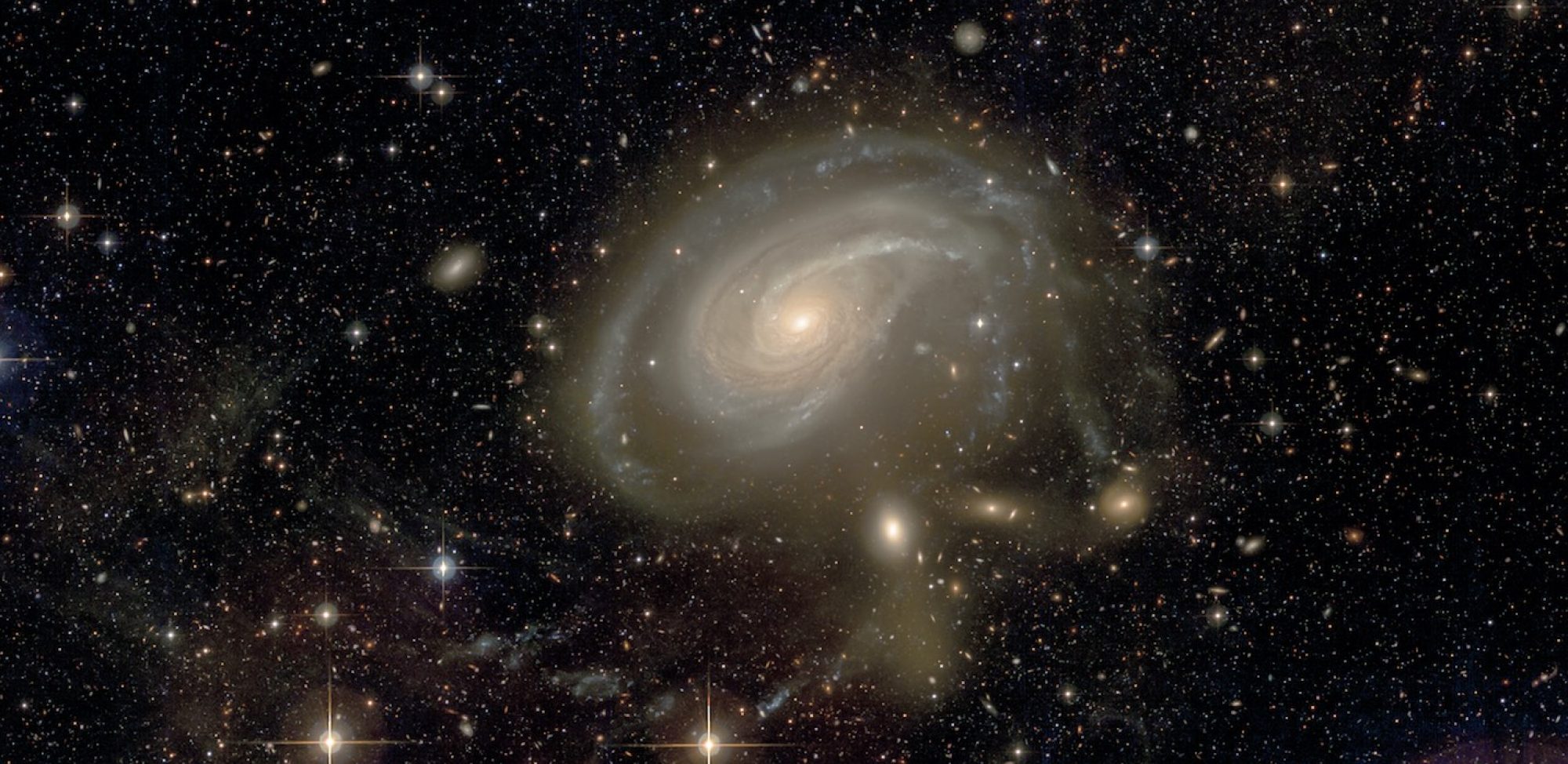MATLAS (Mass Assembly of early-Type GaLAxies with their fine Structures) investigates the mass assembly of Early-Type Galaxies (ETGs) and the build-up of their scaling relations, with extremely deep optical images. The stellar populations in the outermost regions of ETGs, the fine structures (tidal tails, stellar stream, and shells) around them, the Globular Cluster (GCs) and dwarf satellites, preserve a record of past merger events and more generally of the evolution and transformation of galaxies.
This Large Programme of the Canada-France-Hawaii Telescope capitalizes on several developments (1) The unique capabilities of the MegaCam camera on the CFHT. Dedicated imaging procedures and a LSB-optimized pipeline allow us to detect low surface brightness structures and objects, as faint as 29 mag/arcsec2 in the g band. An exclusive image quality enables the identification of their associated globular cluster population (2) A stunning ancillary dataset provided by the ATLAS3D project giving complementary information on their dynamics, gas and stellar content of the host galaxy. (3) Numerical simulations that predict the various types of fine-structures and stellar halos depending on the mechanism driving the mass assembly: major or minor, wet or dry mergers; secular evolution.
The database collected as part of this Large Programme consists of deep multi-color images of 1 square degree fields centered on ETGs with distances below 42 Mpc, outside the Virgo cluster. The fields encompass 177 massive lenticular and elliptical galaxies, 55 massive spiral companions, about 2000 dwarf galaxy satellites, and among them about 100 ultra diffuse galaxies. The MATLAS database is complemented by images from the Next Generation Virgo Cluster Survey (NGVS) and Canada France Imaging Survey (CFIS), making the ETG Atlas3D / Megacam catalog a complete volume limited sample.

